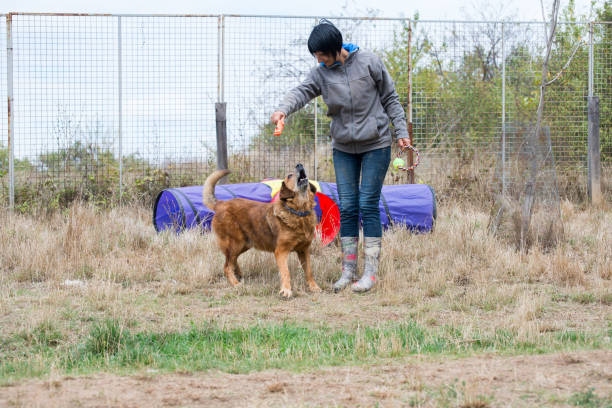Effects of Human Contact and Toys on the Fear Responses to Humans of Shelter-Housed Dogs

This study examined the effects of human contact and toys on fear responses to humans in small breed, shelter-housed dogs. Ninety dogs were assigned to one of three treatments: “control” (control), comprising routine husbandry performed by shelter staff; “human contact” (HC), where dogs additionally received 2 min positive contact daily with an experimenter; or “human contact + toys” (HCT), where the additional human contact included the opportunity to interact with toys. Treatments were implemented daily from day 2 (second day in the shelter) until day 6. On day 7, the fear response towards the experimenter was assessed using salivary cortisol concentrations and a human avoidance test. The behavioural parameters measured were approach and withdrawal responses to the experimenter and time spent in each section of the pen while the experimenter was situated at each of three positions outside the pen: 2 m (position 1) or 1 m away from the pen gate (position 2) or crouched against the pen gate (position 3). On day 8, dogs were assessed by the shelter veterinarian for their suitability for adoption by the public. Treatment had no effect on salivary cortisol concentrations or the proportion of dogs selected for adoption. The results indicated that dogs in the HC and HCT treatments spent more time (P = 0.024) at the front of the pen when the experimenter was at position 3 than control dogs (HC 8.8 s, HCT 8.7 s, control 6.6 s from a possible 10 s). For those dogs that were not at the front of the pen when the experimenter was in position 3, a higher (P < 0.05) percentage of HCT dogs (100%) but not HC dogs (86%, P > 0.05) approached the experimenter compared with control dogs (45%). A second experiment on another 40 dogs examined if dogs, based on their behaviour in the human avoidance test, discriminate between familiar and unfamiliar humans. All dogs received the HC protocol as in Experiment 1 and were observed in the human avoidance test, however, all dogs were tested twice, once with the ‘familiar’ experimenter and once with an ‘unfamiliar’ experimenter. There were no significant (P > 0.05) familiarity or testing order effects, except that dogs approached the unfamiliar experimenter more (60%) than the familiar experimenter (29%) at position 2 (P < 0.05). The results indicate that additional positive human contact other than that associated with routine husbandry reduced the behavioural fear response of dogs to humans, but did not affect the proportion of dogs selected for adoption. The results also indicate that the shelter dogs did not discriminate between familiar and unfamiliar humans, in the handling context used in this study, suggesting a degree of stimulus generalisation may occur.
Conley, M.J., Fisher, A.D., & Hemsworth, P.H. (2014). Effects of human contact and toys on the fear responses to humans of shelter-housed dogs. Applied Animal Behaviour Science, 156, 62-69. doi:https://doi.org/10.1016/j.applanim.2014.03.008
Photo: iStock.com/Foto Zlatko
View ResourceTopic(s): Enrichment, Enrichment, Stress & Improved Welfare, Shelter and Rescue